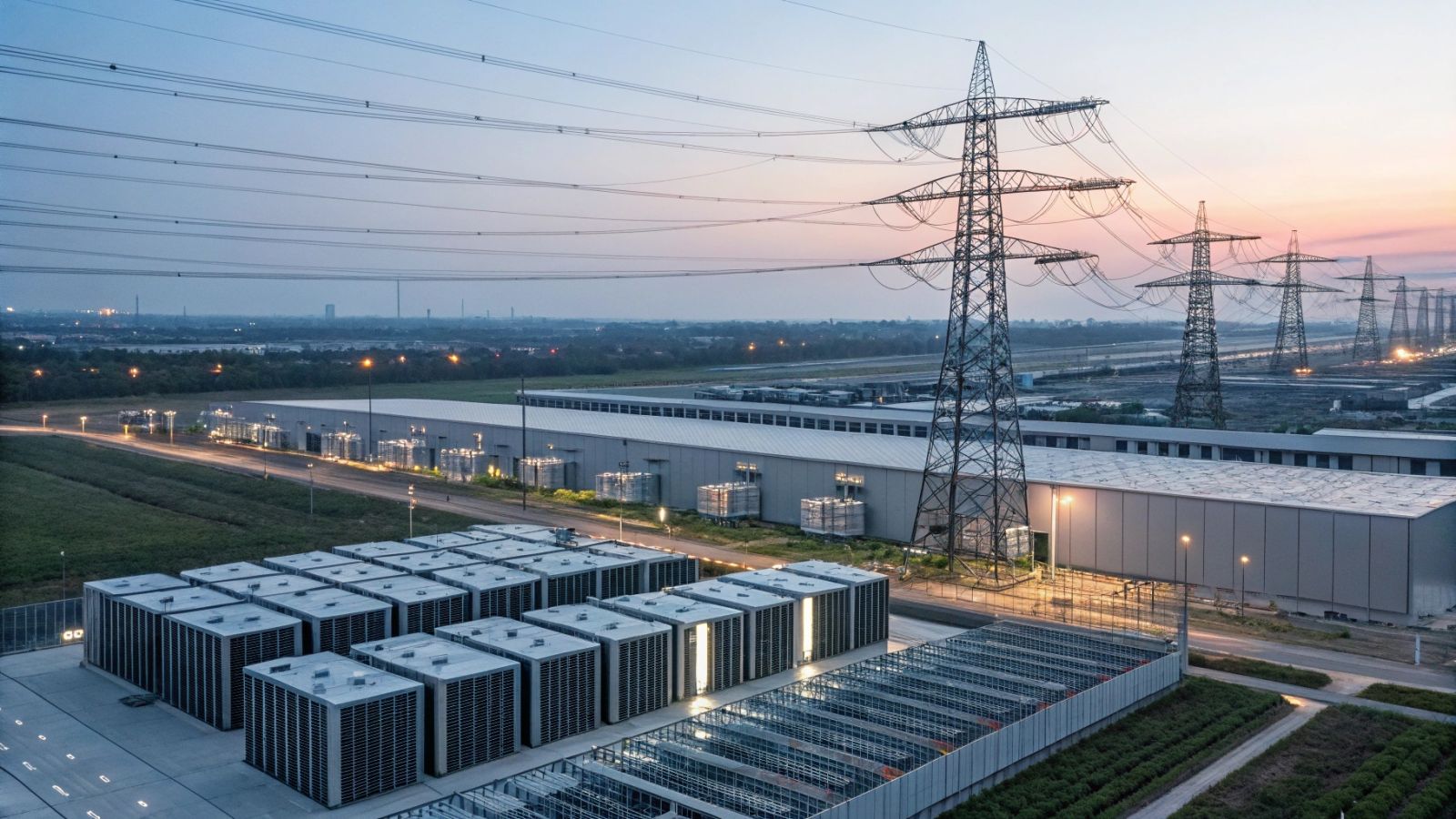Introduction
Energy for AI is the key determinant in the AGI/ASI race: abundant, reliable electricity unlocks faster model training and bigger data centers.
The conversation has shifted beyond chips and algorithms. According to the provided texts, power availability and grid readiness are redefining competition between China and the US. Record investments, grid bottlenecks, and interconnection delays now shape timelines, costs, and outcomes. Below are the figures, risks, and plans driving this shift.
Context
The debate spiked after an AI tour in China. Core takeaway: in China, electricity for AI is assumed; in the US, it is contested among data centers.
Rui Ma (Tech Buzz China) described an ecosystem where power is a given. Grid expert David Fishman contrasted China’s capacity with the US, triggering concern across media and social platforms. The theme: the US grid looks fragile against AI’s rapid expansion.
"China is set up to hit grand slams; America basically just gets on base—and that's not great for us."
David Fishman, China power-grid expert
China vs US: power infrastructure
China’s reserve margin is cited at 80–100%, versus roughly 15% in the US: more headroom means more AI without blackouts.
China planned for decades, building plants and grid at speed. State Grid Corporation reportedly invested hundreds of billions in lines and transformers. Ultra-high-voltage (UHV) lines are a distinctive advantage.
UHV lines and investment
More UHV means moving more power across long distances to feed AI clusters far from generation.
The texts say China has 34 UHV lines; the US has none. That enables routing desert solar to hubs like Beijing. Parallel investments over the last five years reportedly exceed $400B, reinforcing the national backbone.
Reserve and annual growth
A large reserve lowers the risk of AI bottlenecks during demand spikes.
The texts state China adds more electricity each year than Germany uses annually. In the US, a thin margin makes it hard to absorb new data-center loads without delays or localized price hikes.
AI’s energy demand
Large-scale training requires hundreds of megawatts up to gigawatts for single clusters.
The texts report GPT-4 training consumed on the order of tens of GWh. An OpenAI cluster uses ~400 MW, with targets of 1 GW (2028) and 8 GW (2030). An anecdote about Meta (a command to smooth load spikes) illustrates grid stress. RAND projections cite 327 GW globally for AI data centers by 2030, versus ~88 GW today; in parts of Virginia, interconnection can take 4–7 years.
The Challenge
US grid at the edge: long queues, transformer delays, rising costs.
A US DOE report is described as alarming: grid at or near capacity in multiple states, with potential shortages by 2027. There are 2,600 GW waiting in interconnection queues; average timelines reportedly stretch to ~5 years. Transformer lead times are ~120 weeks. Estimates mention $720B in US upgrades by 2030 and $6.7T globally. In Ohio, bills reportedly rose ~$15/month tied to data centers.
Solutions / Approach
The US response mixes mega-projects and unprecedented private capital, but timing and permits remain uncertain.
“Stargate,” a ~$500B plan (OpenAI, SoftBank, Oracle, UAE partners) includes an 875-acre Texas site; some parts are said to be running, amid doubts on funding and siting. In parallel, xAI reportedly stood up a powerful Memphis cluster in ~122 days (200k GPUs), gas-powered, with plans for 1M GPUs by 2026. Meta is building a Louisiana site (~4M ft², >1 GW) and an Ohio cluster (2026), with notable cost-efficiency gains. Microsoft, Google, and Amazon plan tens of billions in 2025; a ~$100B AI fund with BlackRock and >$13B to OpenAI are also mentioned. A federal energy emergency and selected sites for “emergency” AI data centers are reported.
Conclusion
Energy for AI will remain decisive: availability, timing, and grid capacity will matter as much as chips.
The texts suggest time is the critical constraint: vast capital doesn’t automatically compress permitting and build-out. If projects like Stargate and new generation (including nuclear) arrive in time, the US can close the gap; otherwise, China’s power margin stays a structural edge. “Deep See” is cited as an efficiency example that could reduce needs. The 2025–2030 window is pivotal.
FAQ
Quick answers on power, grids, and AI data centers.
- What is energy for AI? The electrical capacity required to train and run AI models at scale.
- Why does China look advantaged? Larger reserve margin, UHV build-out, and faster execution.
- What are the US bottlenecks? Interconnection queues, transformer shortages, and strained grids.
- Will mega-projects fix it? They help, but funding, timing, and permits are critical variables.
